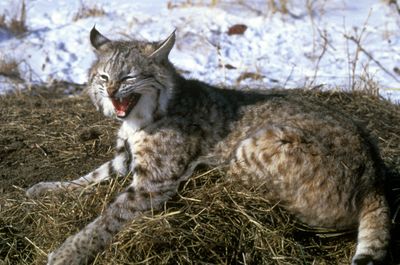Bobcat trapping sparks concern
Pelts’ popularity grows overseas

RENO, Nev. – Bobcat fur coats have become a hot item among the fashion-conscious in Russia and China, leading to a big jump in prices and exports for the soft, spotted pelts.
The fur’s booming popularity has some wild- life advocates worried about possible overtrapping of the cats, which are so reclusive that most states do not know just how many exist.
Bobcat pelts now draw some of the highest prices among trapped furs, recently commanding as much as $550 for a single hide. As the price has gone up, the number of bobcat skins exported by the U.S. has nearly tripled in five years, to 49,700 in 2006.
Because most state wildlife officials do not know the actual size of their bobcat populations, there’s no way to determine if they are being overtrapped, according to wildlife advocates.
“These bobcat harvest numbers should be a red flag to tell biologists that economics and fashion trends may be negatively impacting a species,” said Dave Pauli, western regional director of the Washington, D.C.-based Humane Society.
Federal officials say they are not concerned. The Fish and Wildlife Service estimates there are at least 1.4 million to 2.6 million bobcats nationwide.
But it’s trapping in the Western states that concerns some wildlife advocates.
Pelts from Western bobcats are most prized because the region’s high elevations and cold temperatures make their spotted tan fur softer and longer.
The Humane Society of the United States and other groups are urging Western states to scale back trapping, particularly in Nevada, New Mexico and Wyoming, which have the region’s highest number of bobcats killed and no trapping quotas.